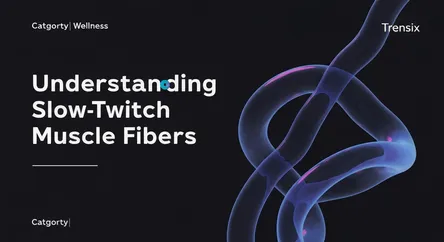Wellness
Understanding Slow-Twitch Muscle Fibers

Discover what slow-twitch (Type I) muscle fibers are, why they're key for endurance, and how they impact your daily fitness and athletic potential.
What is it?
Slow-twitch muscle fibers, also known as Type I or "red" fibers, are muscle cells that contract slowly and are highly resistant to fatigue. They are specialized for sustained, low-intensity activities. These fibers are rich in mitochondria and myoglobin, which allows them to efficiently use oxygen for fuel—a process called aerobic respiration. This efficiency is why they can work for long periods without tiring. You rely on slow-twitch fibers for everyday actions like walking, maintaining posture, and for endurance sports such as long-distance running, swimming, and cycling.
Why is it trending?
Interest in slow-twitch fibers is growing alongside the popularity of endurance sports like marathons and triathlons. Athletes and fitness enthusiasts are keen to understand how to train their specific muscle fiber types to maximize performance. Research continues to explore how targeted endurance training can cause muscle fibers to take on more slow-twitch characteristics, enhancing their efficiency. Furthermore, as the wellness community focuses more on functional fitness for longevity, the crucial role of these fibers in everyday stamina and stability is gaining recognition.
How does it affect people?
Your unique ratio of slow-twitch to fast-twitch fibers, largely determined by genetics, can influence your natural athletic strengths. Individuals with a higher proportion of slow-twitch fibers may find they naturally excel at endurance activities. For everyone, training these fibers through consistent aerobic exercise improves muscular endurance and cardiovascular health. Strong slow-twitch fibers are vital not just for athletes but for daily life, supporting posture and enabling simple movements. Understanding how to train them can help people improve their stamina for both sports and everyday tasks.